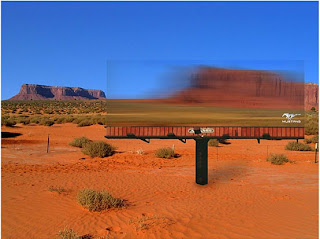
Ever tried finding out the difference between the terms “Word of Mouth”, “Viral Marketing” and “Buzz Marketing”? Not many have. And not many know whether there is any difference at all!
In an article titled “The Word on Word of Mouth” by Dave Balter, the writer beautifully delineates the differences between the three terms.
WORD OF MOUTH is the most powerful medium on the planet. It is the actual sharing of an opinion about a product or service between two or more consumers. It is what happens when people become natural brand advocates. It is the holy grail of marketers, CEOs and entrepreneurs, as it can make or break a product. The key to its success: it is honest and natural.
VIRAL MARKETING is an attempt to deliver a marketing message that spreads quickly and exponentially among consumers. Today, this often comes in the form of an email message or video. Contrary to alarmists’ fear, viral isn’t evil. It isn’t dishonest or unnatural. At its best, it is word of mouth enabled, and at its worst, it is just another interruptive marketing message.
BUZZ MARKETING is an event or activity that generates publicity, excitement, and information to the consumer. It is usually something that combines a wacky, jaw-dropping event or experience with pure branding, like tattooing your forehead or your ass, as a NYC health club recently did). If buzz is done right, people will write about it, so it essentially becomes a great PR vehicle.
Let us get this clear by a few examples.
 The Subservient Chicken (http://www.subservientchicken.com/) is a website developed by Crispin Porter + Bogusky for their new client, Burger King. The website was comprised of a video with a man in a room dressed in a chicken suit. If you just typed in a word in the bar below the chicken, you could make the chicken do all sorts of things. People visited the site again and again. They talked about it and recommended it to others. The chicken was addictive! This was a great example of Viral Marketing. But what it lacked was WOM. Though everyone talked about the chicken, no one talked about how good the burgers were. The sales did not increase.
The Subservient Chicken (http://www.subservientchicken.com/) is a website developed by Crispin Porter + Bogusky for their new client, Burger King. The website was comprised of a video with a man in a room dressed in a chicken suit. If you just typed in a word in the bar below the chicken, you could make the chicken do all sorts of things. People visited the site again and again. They talked about it and recommended it to others. The chicken was addictive! This was a great example of Viral Marketing. But what it lacked was WOM. Though everyone talked about the chicken, no one talked about how good the burgers were. The sales did not increase.
When Richard Branson wanted to launch his mobile services in America, he wanted to create a splash, a buzz. It was decided to drop Richard Branson from a skyscraper into Times Square in New York City at rush hour — naked. At the same time, have two hundred people, dressed up in red spandex suits, running around handing out product samples and information leaflets, and otherwise scaring the hell out of the commuters running for the five o’clock train. And you know what? They pulled it off. Okay, so Branson was in a nude suit and he was actually lowered on a crane. But those guys in the red spandex managed to hand out thousands of flyers and many people missed their five o’clock train. Overall, the Buzz Marketing was a raging success.
(http://www.informationweek.com/news/showArticle.jhtml?articleID=6502659)

Google did no marketing, they spent no money. They created scarcity by giving out Gmail accounts to a handful of “power users”. People started talking about the benefits of having Gmail accounts and thus they started lusting for these accounts. This was effective WOM that led to the success of Gmail.
So what is the easiest way to tell these mediums apart? Viral and Buzz marketing are the cause. They are manufactured marketing initiatives that are intended to capture people’s attention and get them talking. They can certainly be effective at cutting through today’s cluttered marketplace, but when they become pervasive, they just become part of the noise. Word of Mouth is the desired effect. It is a natural and honest occurrence, and it is very difficult for a manufactured marketing message to create it.

















 The Subservient Chicken (
The Subservient Chicken (

 A website named SatanHatesCedarCreek.com aims at reinforcing the faith in God and attracting people towards the church.
A website named SatanHatesCedarCreek.com aims at reinforcing the faith in God and attracting people towards the church. 







